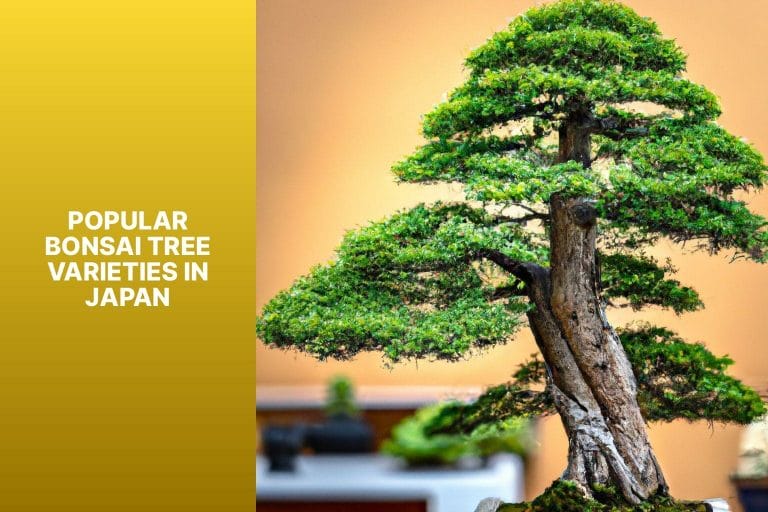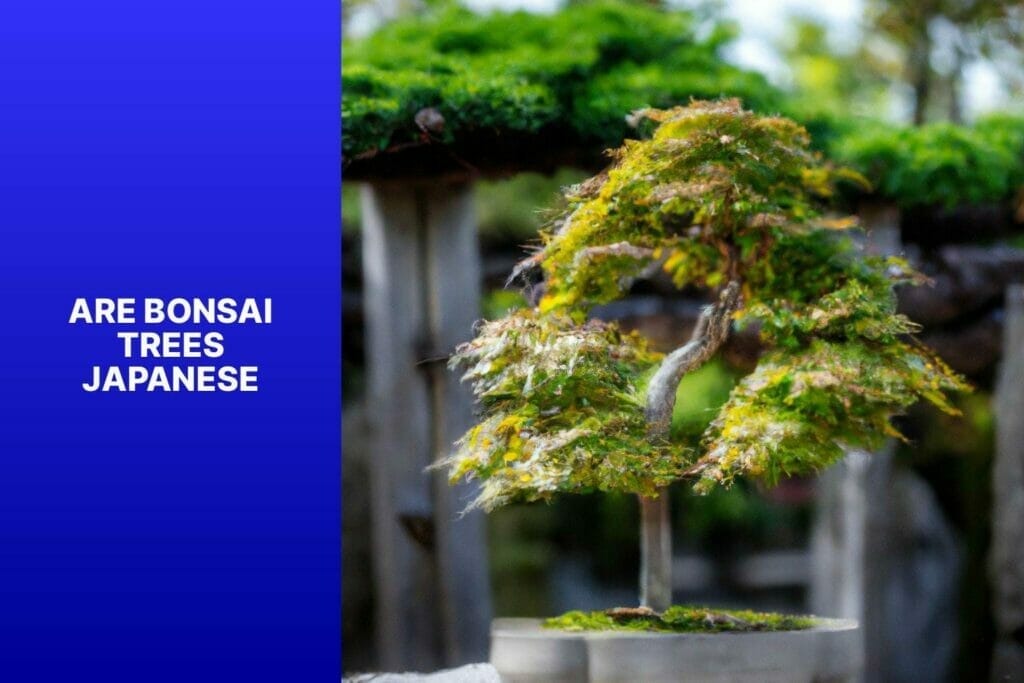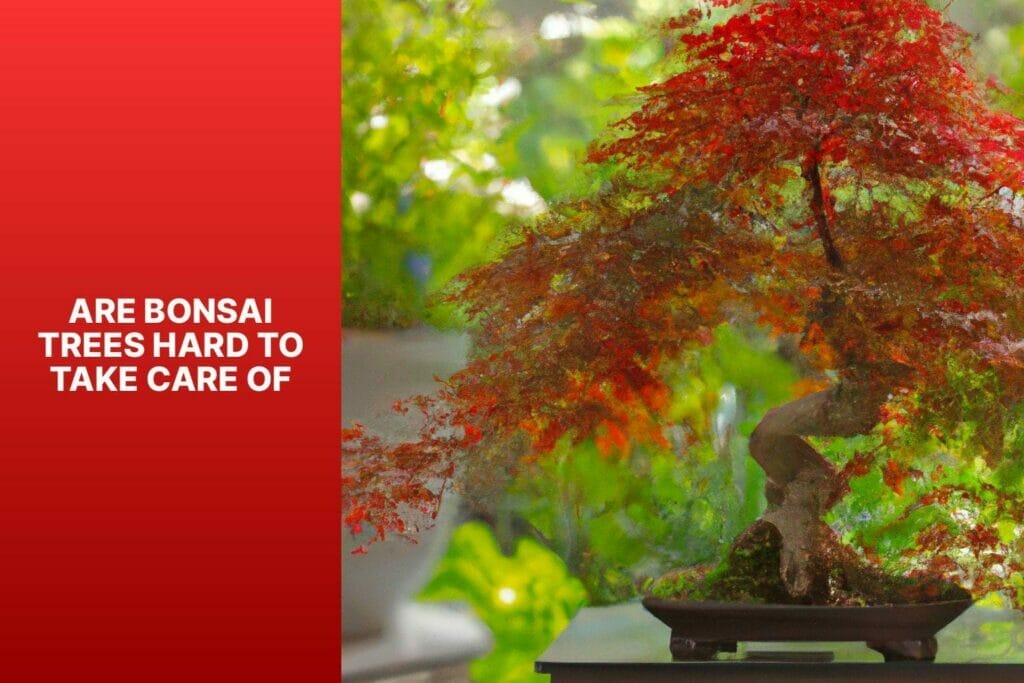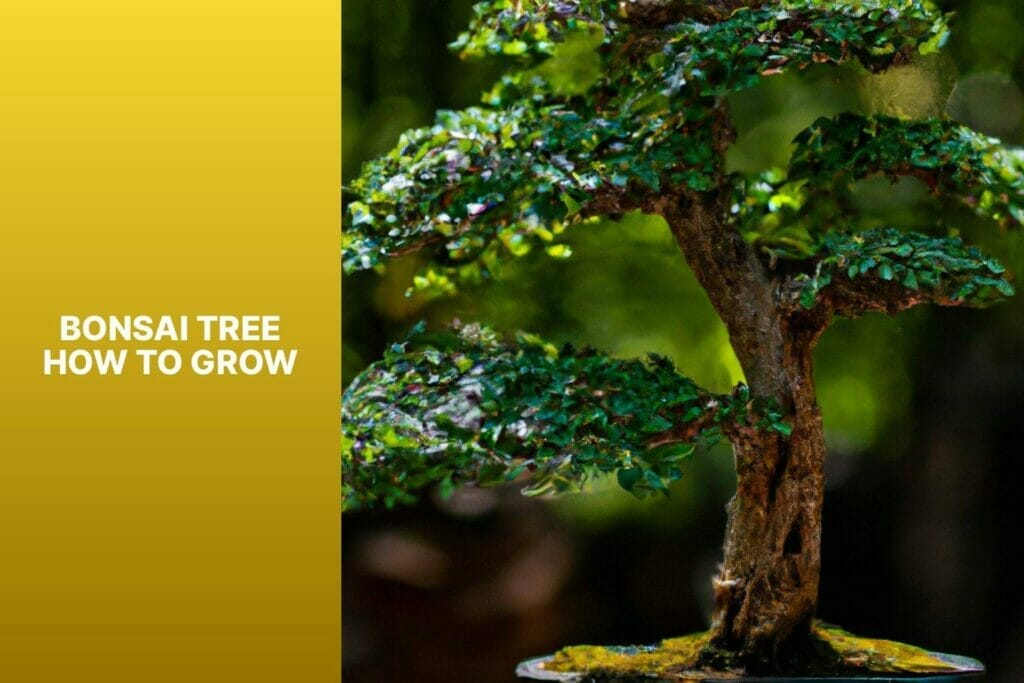Bonsai trees, known for their unique and miniature form, have captivated people worldwide. There is often confusion about their origins and whether they are exclusively Japanese. Let’s delve into the fascinating world of bonsai trees:
Introduction to Bonsai Trees:
Bonsai trees are small, meticulously shaped trees that mimic the look of full-sized mature trees. They are cultivated through careful pruning, shaping, and repotting, resulting in a harmonious balance between the tree and its container.
The art of bonsai has gained popularity worldwide due to its aesthetic appeal and the meditative experience it offers.
Are Bonsai Trees Japanese?
Bonsai trees are indeed Japanese. Cultivating bonsai originated in China but flourished in Japan, making Japan the epicenter of this remarkable art form.
Japanese bonsai trees have distinct characteristics that set them apart from other bonsai styles. The meticulous attention to detail, use of natural elements, and harmony between the tree and its pot are all hallmarks of Japanese bonsai.
Japanese culture deeply admires the beauty and serenity of bonsai trees. The art of bonsai cultivation is a cherished tradition in Japan, deeply ingrained in its history and heritage.
Bonsai trees reflect the connection between humans and nature, embodying balance, peace, and tranquility.
So, to answer the question, “Are bonsai trees Japanese?” Yes, they are.
The cultivation and appreciation of bonsai trees have been deeply rooted in Japanese culture for centuries, solidifying its status as an integral part of Japan’s artistic legacy.
History of Bonsai Trees in Japanese Culture
Bonsai trees have a fascinating and extensive history in Japanese culture. Originating in China during the Han dynasty, they were later introduced to Japan in the 6th century.
The term “bonsai,” translated to “tray planting” in Japanese, perfectly encompasses cultivating and training miniature trees.
Bonsai trees hold deep symbolism in Japanese culture, representing harmony, balance, and patience. They reflect the natural world, capturing the beauty of full-sized trees in a small and delicate package.
Bonsai trees find their place on display in homes, gardens, and temples, playing a significant role in Japanese aesthetics.
Throughout generations, the cultivation of bonsai trees has been a treasured tradition, passed down from one skilled grower to the next.
These experienced individuals invest years in shaping and carefully pruning the trees to achieve a desired and specific appearance. The delicate process demands dedication and a profound understanding of horticulture.
Bonsai trees in Japanese culture are strongly associated with tranquility and contemplation. Many individuals practice the art of bonsai cultivation as a form of meditation and stress relief.
Nurturing and tending to these trees can provide a calming and immensely gratifying experience.
How did Bonsai Trees become Associated with Japan?
Bonsai trees became associated with Japan through Chinese cultural influence and the development of Japanese aesthetics.
Cultivating miniature trees in pots, known as bonsai, was introduced to Japan over a thousand years ago. During the 12th-century Kamakura period, Chinese Zen Buddhism was brought to Japan by monks, greatly influencing Japanese art and culture, including bonsai.
It was not until the 14th century Muromachi period that bonsai gained popularity among the Japanese aristocracy. Tea ceremony masters incorporated bonsai into their gardens as a form of meditation and reflection, contributing to its rise.
Bonsai continued to evolve and gain recognition during the 17th-century Edo period. It became more accessible to the general public as bonsai nurseries emerged and techniques for creating and shaping bonsai trees were refined.
Bonsai also became associated with wabi-sabi, which values simplicity, imperfection, and natural beauty.
Today, Japan is renowned for its expertise in bonsai cultivation and bonsai masters. The country has dedicated bonsai gardens, museums, and exhibitions that showcase the beauty and craftsmanship of Japanese bonsai trees.
Bonsai symbolizes harmony, reflection, and a connection to nature, making it an integral part of Japanese culture. Its association with Japan has helped preserve and promote the art form worldwide, making it a cherished tradition for bonsai enthusiasts globally.
Characteristics of Japanese Bonsai Trees
Japanese bonsai trees are known for their specific characteristics, which include size, shape, style, and care. When it comes to size, these trees are typically small, ranging from a few inches to a couple of feet tall. This size makes them easy to display and maintain.
As for shape, traditional Japanese bonsai trees exhibit distinct shapes such as cascading (kengai), literati (bunjin), or windswept (fukinagashi). These shapes represent the beauty and harmony found in nature.
In terms of style, there are various styles of Japanese bonsai trees, each conveying a different aesthetic and artistic expression.
These styles include formal upright (chokkan), slanting (shakan), and semi-cascade (han-kengai). Each style adds its unique touch to the overall beauty of the bonsai tree.
Bonsai trees in Japan have distinct characteristics that set them apart. They often reflect lush natural landscapes with carefully crafted shapes, asymmetry, and attention to minute details.
Japanese bonsai also showcase a deep connection to spirituality and Zen philosophy, enhancing its aesthetic charm.
Taking care of Japanese bonsai trees requires meticulous pruning, watering, and fertilizing to maintain their shape and overall health. Proper placement in terms of light and temperature is crucial for their well-being.
Japanese bonsai trees truly showcase the tradition’s artistry, precision, and dedication. They are a cherished and admired form of natural expression.
What Makes Bonsai Trees in Japan Unique?
Bonsai trees in Japan are exceptional for several reasons. Japanese bonsai trees showcase “wabi-sabi,” emphasizing the beauty of imperfection. They intentionally have asymmetrical forms and gnarled branches, capturing nature’s unpredictability.
Japanese bonsai trees receive meticulous attention to detail. Bonsai masters spend years pruning and training the trees to achieve the desired shape and size. They also create harmony and balance between the tree and its container, as well as the overall composition of the bonsai display.
Japanese bonsai trees draw inspiration from natural landscapes, like mountains and waterfalls, to create a tranquil atmosphere.
This art form has deep cultural and historical significance in Japan, reflecting values of longevity, patience, and harmony.
Popular Bonsai Tree Varieties in Japan:

Photo Credits: Mnbonsainetwork.Com by Roy Hill
Popular bonsai tree varieties in Japan include:
- Pine: Common bonsai tree variety symbolizes longevity, strength, and wisdom.
- Maple: Known for vibrant foliage and striking autumn colors.
- Juniper: Notable for its unique appearance with gnarled trunks and twisted branches.
- Cherry Blossom: Highly revered for delicate pink and white flowers, symbolizing beauty and the transient nature of life.
- Japanese Cedar: Valued for graceful, drooping branches and ability to withstand extreme weather conditions.
These bonsai trees are cultivated with care and attention to detail, creating miniature versions of larger trees. Regular pruning and shaping are required to maintain their desired form.
Bonsai enthusiasts in Japan take pride in growing and caring for these beautiful trees, often displaying them in special exhibitions and competitions.
In Japan, traditional bonsai tree varieties hold immense significance. Known for their elegance and symbolism, traditional Japanese bonsai trees include varieties like pine, maple, juniper, and cherry blossom – each representing different seasons and cultural values.
By exploring the history, characteristics, and care, we can gain a deeper understanding and appreciation for this timeless art form that continues to inspire and captivate bonsai enthusiasts worldwide.
– Bonsai trees originated in China but are often associated with Japanese culture.
– Japanese bonsai trees have a unique and distinct style.
– Caring for bonsai trees involves specific steps to ensure their health and longevity.
What are Some Traditional Bonsai Trees in Japan?
1. Pine (Matsu)
2. Juniper (Shimpaku)
3. Maple (Momiji)
4. Cherry Blossom (Sakura)
5. Azalea (Tsutsuji)
6. Wisteria (Fuji)
Traditional bonsai trees in Japan are rich, with various species cultivated and shaped for centuries. Pine, juniper, maple, cherry blossom, azalea, and wisteria are popular choices.
These trees hold significant meaning and symbolism in Japanese culture.
Pine trees, called Matsu, embody resilience and represent longevity and wisdom. Juniper trees, known as shimpaku, possess dense foliage that symbolizes nobility. Maple trees, called momiji, showcase vibrant autumn colors and signify change and harmony.
Cherry blossom trees, referred to as sakura, are iconic and symbolize the beauty and transience of life. Azalea trees, known as tsutsuji, display vibrant flowers representing femininity and maturity. Wisteria trees, called fuji, captivate with cascading flowers, symbolizing perseverance and honor.
These traditional bonsai trees require specialized care and attention to maintain their health and aesthetic appeal. Proper pruning, watering, and fertilization techniques are necessary for their longevity.
Each tree has specific requirements, which are crucial for ensuring its well-being.
Origins of Bonsai Trees
The origins of bonsai trees can be traced back to ancient China and Japan. In China, bonsai cultivation has been practiced since the 6th century, while Japan adopted this art form during the Heian period in the 9th century.
Japanese monks brought cultivation techniques from China and then adapted them.
The Chinese practice of creating miniature landscapes and penjing involved shaping and maintaining small trees in containers.
This technique eventually made its way to Japan and transformed into what is now known as bonsai. The Japanese developed their unique styles, including formal upright, informal upright, slanting, and cascade.
To maintain their small size and natural appearance, bonsai trees require specific care. Tree species like pine, maple, and juniper can be used for bonsai cultivation.
Bonsai holds cultural and spiritual significance in China and Japan, and its appreciation has spread worldwide.
Caring for Bonsai Trees
Caring for Bonsai Trees involves watering, pruning, fertilizing, and positioning.
|
What are the Essential Steps in Bonsai Tree Care?
Here are the necessary steps to take care of your bonsai tree:
- Choose a suitable location for your bonsai tree based on light, temperature, and humidity.
- Regularly water your bonsai tree to keep the soil moist but not soaked. The frequency of watering depends on the specific tree species and environmental conditions.
- Maintain the desired shape and promote healthy growth of your bonsai tree by regularly pruning it. Remove dead or overgrown branches and trim excessive foliage.
- Shape the branches of your tree using bonsai wire. Wrap the wire around the branch and gently bend it to the desired position, careful not to damage it.
- Regularly fertilize your bonsai tree to provide essential nutrients. Please apply a suitable bonsai fertilizer according to instructions, typically during the growing season.
- Report your bonsai tree every few years to encourage root growth and provide fresh soil. Carefully remove the tree from its pot, trim the roots, and replant it in a slightly larger pot with well-draining soil.
- Inspect your bonsai tree regularly for pests or diseases. If any are found, promptly treat the issue with appropriate methods such as insecticides or fungicides.
Remember, each bonsai tree may have specific care requirements depending on its species, so it’s important to research and understand the needs of your particular tree.
By following these essential steps, you can ensure the health and longevity of your bonsai tree.
Some Facts About Bonsai Trees:
- ✅ Bonsai trees are a representation of a single tree that resembles the shape of a real tree. (Source: Japanese Bonsai Tree)
- ✅ Bonsai trees originated in Japan and are deeply ingrained within Japanese culture. (Source: Japanese Bonsai Tree)
- ✅ Bonsai trees can be purchased at interior goods and home furnishing stores. (Source: Japanese Bonsai Tree)
- ✅ Taking care of a bonsai tree requires a lot of time and effort. (Source: Japanese Bonsai Tree)
- ✅ Bonsai trees have become a traditional Japanese art form with rules and principles, such as proportion and natural appearance. (Source: Japanese Bonsai Tree)


